Combining Software-Defined Radio Learning Modules and Neural Networks for Teaching Communication Systems Courses †
Abstract
:1. Introduction
2. Materials and Methods
2.1. SDR-Based Learning Methodology
2.1.1. Towards Software Defined Radio
2.1.2. Commercial SDR Boards as Learning Tools
2.2. Neural Networks for Cognitive Radio
- The ability to deal with incomplete or erroneous data without affecting the results.
- The ability to process large amounts of data, given the massively parallel architecture.
- The ability to make decisions based on the processed data.
2.2.1. Neural Networks
2.2.2. Applications to Cognitive Radio
- In the physical layer, neural networks can be used for interference alignment, to classify the modulation modes, or to design efficient error correction codes.
- In the data link layer, neural networks can be used for resource allocation or link quality evaluation.
- In the network (or routing) layer, they can help to seek an optimal routing path.
- In higher levels, such as the application layer, they can be used to enhance data compression and multi-session scheduling.
- Outside of the protocol stack, there are many advantages for using neural networks in other functions, such as security and privacy protection.
2.3. Case Study 1: Communication System
- Student A implements the QPSK Transmitter module from a PC connected to the Pluto board.
- Student B implements the QPSK Receiver module from a PC connected to the other Pluto board.
2.3.1. QPSK Modulation
- ASK methods (Amplitude-Shift Keying) rely on the amplitude.
- FSK methods (Frequency-Shift Keying) rely on the frequency.
- PSK methods (Phase-Shift Keying) use the phase.
2.3.2. Transmitter
- Radio ID: used to identify each Pluto board.
- Center frequency: the signal is modulated in baseband and afterwards translated to a certain transmission frequency, which must be within the range of 70 MHz to 6 GHz. This parameter should have the same value at both the transmitter and receiver in order to obtain the best possible quality of the communication.
- Gain: the attenuation of the signal while being transmitted, which must be with the range of to 0 dB.
- Constellation ordering: the way in which the input bits are mapped into the QPSK constellation diagram.
- Phase offset: the phase associated with the first symbol in the constellation.
2.3.3. Receiver
2.4. Case Study 2: Modulation Recognition
- One PC, denoted Tx, is responsible for loading a dataset consisting of a group of signals modulated using different schemes (available at [45]) and transmitting these signals using a Pluto board configured as transmitter.
- Several PCs (one for each student), denoted Rx, are responsible for receiving the transmitted signals using a Pluto board configured as a receiver; they implement a neural network in the form of software that can process the received signals and identify the modulation used for each signal. Initially, the neural network is characterized by processing the dataset locally (i.e., without using the Pluto board), and finally the whole system is characterized using Tx and Rx i (where i represents each student) through the corresponding Pluto boards.
2.4.1. Dataset
- QPSK, BPSK, and 8PSK.These three modulation schemes belong to the PSK category, in which the phase of the carrier can take several different values from a given discrete subset, making for a limited number of available states. Depending on the number of available phases, it is possible to obtain BPSK (two phases), QPSK (four phases), or 8PSK (eight phases).
- GFSK and CPFSK.The second category of digital modulation is FSK, in which two or more frequencies are used to encode each symbol. Here, we consider two different types: GFSK (Gaussian Frequency Shift Keying), where data pulses are first filtered by a Gaussian filter after which a logic 1 is represented by an increment of the carrier frequency and a logic 0 by a decrement of the carrier frequency; and CPFSK (Continuous Phase Frequency Shift Keying), where the phase is continuous, which is desirable for transmission over band-limited channels.
- 16QAM and 64QAM.These schemes belong to the category of Quadrature Amplitude Modulation (QAM), in which two carrier waves are used with the same frequency while being out of phase with each other by 90º in a condition known as quadrature. The transmitted signal is obtained by adding the two carrier waves together. The input flow of the digital bit streams can be divided into groups of bits needed to generate N different modulation states. In this case, we consider two possible values of N: 16QAM and 64QAM.
- PAM4.The last category of digital modulation is Pulse Amplitude Modulation (PAM), in which the phase and frequency are fixed and the amplitude changes. Different PAM schemes can be obtained depending on the number of possible values for the amplitude that the carrier wave can take. In this case, we use (PAM4).
- B-FM.The first category of analog modulation considered in this dataset is Frequency Modulation (FM), in which the information is encoded in the carrier wave by varying its instantaneous frequency.
- AM-SSB.In a second analog category, we consider Amplitude Modulation (AM), in which the information is encoded in the carrier wave by varying its instantaneous amplitude. In particular, we first focus on Single-Sideband Modulation (SSB), which reduces transmission power and bandwidth by sending only half of the bandwith originally generated by AM modulation.
- AM-DSB.Finally, an additional case of AM modulation is Double-Sideband, which does not implement the power and bandwidth reduction, as the whole modulated signal is transmitted. The main difference from basic AM is that AM-DSB does not include carrier re-insertion.
2.4.2. Convolutional Neural Network
- Learning rate: this parameter represents the step of variation in the network weights in each iteration while training the network. A very small step makes the training process too slow, while a very large step leads to less optimal values for the weights.
- Number of layers: this parameter represents the number of convolutional layers in the network. In principle, deeper networks possess more powerful ability to learn more complex features, although an excessive number of layers can lead to an overfitting scenarios that reduce the performance of the network. Overfitting is an undesirable behavior that occurs when the network model provides accurate predictions for training data but not for new data, and can happen for several reasons, including insufficient training data, excessively noisy data (including irrelevant information), the model being trained for too long, or the model complexity being too high (learning the noise in the data).
- Number of filters: this parameter represents the number of neurons in the convolutional layers. To reduce the complexity of this case study, we propose using the same size in all convolutional layers and reducing the dimension directly in the last dense layers.
- Communication distance: this parameter does not modify the CNN, only the distance between both Pluto boards (i.e., the transmitter and receiver). The goal is to characterize the performance of the network when the communication distance increases.
3. Results
3.1. Case Study 1
3.1.1. Spectrum Visualization
3.1.2. Frequency Deviation
3.2. Case Study 2
3.2.1. Effect of Learning Rate
- Training time: how long it takes the algorithm to converge.
- Accuracy: the percentage of input samples which are correctly classified by the network.
3.2.2. Effect of Number of Layers
3.2.3. Effect of Number of Filters
3.2.4. Effect of Communication Distance
4. Discussion
Author Contributions
Funding
Data Availability Statement
Conflicts of Interest
Abbreviations
| 5G | Fifth Generation |
| 6G | Sixth Generation |
| 8PSK | Eight Phase-Shift Keying |
| A/D | Analog-to-Digital |
| ADC | Analog-to-Digital Converter |
| ADALM | Advanced Active Learning Module |
| AGC | Automatic Gain Control |
| AI | Artificial Intelligence |
| AM | Amplitude Modulation |
| AM-SSB | Amplitude Modulation with Single-Sideband |
| AM-DSB | Amplitude Modulation with Double-Sideband |
| ASK | Amplitude-Shift Keying |
| BER | Bit Error Rate |
| BPSK | Binary Phase-Shift Keying |
| CNN | Convolutional Neural Network |
| COVID-19 | Coronavirus Disease 2019 |
| CPFSK | Continuous-Phase Frequency-Shift Keying |
| CR | Cognitive Radio |
| DAC | Digital-to-Analog Converter |
| dB | Decibel |
| DL | Deep Learning |
| DNN | Deep Neural Network |
| DSP | Digital Signal Processor |
| FM | Frequency Modulation |
| FPGA | Field-Programmable Gate Array |
| FSK | Frequency-Shift Keying |
| GFSK | Gaussian Frequency-Shift Keying |
| GHz | GigaHertz |
| ID | Identification |
| IoT | Internet of Things |
| LSTM | Long Short-Term Memory |
| MHz | MegaHertz |
| ML | Machine Learning |
| mm-Wave | Millimeter-Wavelength |
| NN | Neural Network |
| OTA | Over-The-Air |
| PAM | Pulse Amplitude Modulation |
| PLL | Phase-Locked Loop |
| PSK | Phase-Shift Keying |
| QAM | Quadrature Amplitude Modulation |
| QPSK | Quadrature Phase-Shift Keying |
| ReLU | Rectified Linear Unit |
| RF | Radio Frequency |
| Rx | Receiver |
| SDR | Software-Defined Radio |
| SNR | Signal-to-Noise Ratio |
| SoC | System-on-Chip |
| Tx | Transmitter |
| URH | Universal Radio Hacker |
| USRP | Universal Software Radio Peripheral |
References
- Loh, K. Fertilizing AIoT from Roots to Leaves. In Proceedings of the 2020 IEEE International Solid-State Circuits Conference-(ISSCC), San Francisco, CA, USA, 16–20 February 2020. [Google Scholar]
- Liu, M. Unleashing the Future of Innovation. In Proceedings of the 2021 IEEE International Solid-State Circuits Conference (ISSCC), San Francisco, CA, USA, 13–22 February 2021; pp. 9–16. [Google Scholar]
- Park, S.M.; Kim, Y.G. A Metaverse: Taxonomy, Components, Applications, and Open Challenges. IEEE Access 2022, 10, 4209–4251. [Google Scholar] [CrossRef]
- Cisco Systems. Cisco Annual Internet Report (2018–2023); Cisco Systems: Hong Kong, 2020. [Google Scholar]
- Vitturi, S.; Zunino, C.; Sauter, T. Industrial Communication Systems and Their Future Challenges: Next-Generation Ethernet, IIoT, and 5G. Proc. IEEE 2019, 107, 944–961. [Google Scholar] [CrossRef]
- Zhang, C.; Ueng, Y.L.; Studer, C.; Burg, A. Artificial Intelligence for 5G and Beyond 5G: Implementations, Algorithms, and Optimizations. IEEE J. Emerg. Sel. Top. Circuits Syst. 2020, 10, 149–163. [Google Scholar] [CrossRef]
- Kanhere, O.; Rappaport, T.S. Position Location for Futuristic Cellular Communications: 5G and Beyond. IEEE Commun. Mag. 2021, 59, 70–75. [Google Scholar] [CrossRef]
- Matthaiou, M.; Yurduseven, O.; Ngo, H.Q.; Morales-Jimenez, D.; Cotton, S.L.; Fusco, V.F. The Road to 6G: Ten Physical Layer Challenges for Communications Engineers. IEEE Commun. Mag. 2021, 59, 64–69. [Google Scholar] [CrossRef]
- Peng, V. Adaptive Intelligence in The New Computing Era. In Proceedings of the 2021 IEEE International Solid-State Circuits Conference (ISSCC), San Francisco, CA, USA, 13–22 February 2021; pp. 17–21. [Google Scholar]
- She, C.; Sun, C.; Gu, Z.; Li, Y.; Yang, C.; Poor, H.V.; Vucetic, B. A Tutorial on Ultrareliable and Low-Latency Communications in 6G: Integrating Domain Knowledge Into Deep Learning. Proc. IEEE 2021, 109, 204–246. [Google Scholar] [CrossRef]
- Mitola, J.; Maguire, G.Q. Cognitive Radio: Making Software Radios More Personal. IEEE Pers. Commun. 1999, 6, 13–18. [Google Scholar] [CrossRef]
- Akyildiz, I.F.; Lee, W.Y.; Vuran, M.C.; Mohanty, S. A Survey on Spectrum Management in Cognitive Radio Networks. IEEE Commun. Mag. 2008, 46, 40–48. [Google Scholar] [CrossRef]
- Khan, A.A.; Rehmani, M.H.; Rachedi, A. Cognitive-Radio-Based Internet of Things: Applications, Architectures, Spectrum Related Functionalities, and Future Research Directions. IEEE Wirel. Commun. 2017, 24, 17–25. [Google Scholar] [CrossRef]
- Hu, F.; Chen, B.; Zhu, K. Full Spectrum Sharing in Cognitive Radio Networks Toward 5G: A Survey. IEEE Access 2018, 6, 15754–15776. [Google Scholar] [CrossRef]
- Restuccia, F.; Melodia, T. Deep Learning at the Physical Layer: System Challenges and Applications to 5G and Beyond. IEEE Commun. Mag. 2020, 58, 58–64. [Google Scholar] [CrossRef]
- Han, S.; Xie, T.; Chih-Lin, I.; Chai, L.; Liu, Z.; Yuan, Y.; Cui, C. Artificial-Intelligence-Enabled Air Interface for 6G: Solutions, Challenges, and Standardization Impacts. IEEE Commun. Mag. 2020, 58, 73–79. [Google Scholar] [CrossRef]
- Mao, Q.; Hu, F.; Hao, Q. Deep Learning for Intelligent Wireless Networks: A Comprehensive Survey. IEEE Commun. Surv. Tutorials 2018, 20, 2595–2621. [Google Scholar] [CrossRef]
- O’Shea, T.J.; Roy, T.; Clancy, T.C. Over-the-Air Deep Learning Based Radio Signal Classification. IEEE J. Emerg. Sel. Top. Signal Process. 2018, 12, 168–179. [Google Scholar] [CrossRef]
- Zúñiga, V.; Camuñas-Mesa, L.; Linares-Barranco, B.; Serrano-Gotarredona, T.; de la Rosa, J.M. Using Neural Networks for Optimum band selection in Cognitive-Radio Systems. In Proceedings of the 2020 27th IEEE International Conference on Electronics, Circuits and Systems (ICECS), Glasgow, UK, 23–25 November 2020. [Google Scholar]
- Newman, T.R.; Bose, T. A Cognitive Radio Network Testbed for Wireless Communication and Signal Processing Education. In Proceedings of the 2009 IEEE 13th Digital Signal Processing Workshop and 5th IEEE Signal Processing Education Workshop, Marco Island, FL, USA, 4–7 January 2009; pp. 757–761. [Google Scholar]
- Dietrich, C.; Goff, R.; Dessources, D.; Gomez, X.; Garcia-Sheridan, J.; Polys, N.; Buehrer, R.M.; Kim, S.; Marojevic, V.; Hearn, C. Remote laboratory exercises and tutorials for spectrum-agile radio frequency systems. In Proceedings of the 2018 IEEE Frontiers in Education Conference (FIE), San Jose, CA, USA, 3–6 October 2018; pp. 1–2. [Google Scholar]
- Nagurney, L.S. Software defined radio in the electrical and computer engineering curriculum. In Proceedings of the 2009 39th IEEE Frontiers in Education Conference, San Antonio, TX, USA, 18–21 October 2009; pp. 1–6. [Google Scholar]
- Katz, S.; Flynn, J. Using software defined radio (SDR) to demonstrate concepts in communications and signal processing courses. In Proceedings of the 2009 39th IEEE Frontiers in Education Conference, San Antonio, TX, USA, 18–21 October 2009; pp. 1–6. [Google Scholar]
- Vajdic, S.; Jiang, F. A hands-on approach to the teaching of electronic communications using GNU radio companion and the universal software radio peripheral. In Proceedings of the 2016 IEEE Integrated STEM Education Conference (ISEC), Princeton, NJ, USA, 5 March 2016; pp. 19–21. [Google Scholar]
- Martoyo, I.; Setiasabda, P.; Kanalebe, H.Y.; Uranus, H.P.; Pardede, M. Software Defined Radio for Education: Spectrum Analyzer, FM Receiver/Transmitter and GSM Sniffer with HackRF One. In Proceedings of the 2018 2nd Borneo International Conference on Applied Mathematics and Engineering (BICAME), Balikpapan, Indonesia, 10 December 2018; pp. 188–192. [Google Scholar]
- Varela Ferrando, R. Digitalizadores Basados en Radio Cognitiva para Aplicaciones IoT/5G: Etapa Transmisora. (Trabajo Fin de Grado Inédito); Universidad de Sevilla: Sevilla, Spain, 2021; Available online: https://idus.us.es/handle/11441/141819 (accessed on 1 September 2023).
- Romero Amor, J. Aplicaciones de Redes Neuronales Artificiales al Paradigma de Radio Cognitiva. (Trabajo Fin de Grado Inédito); Universidad de Sevilla: Sevilla, Spain, 2021; Available online: https://idus.us.es/handle/11441/141775 (accessed on 1 September 2023).
- Onoe, S. Evolution of 5G Mobile Technology Toward 2020 and Beyond. In Proceedings of the 2016 IEEE International Solid-State Circuits Conference (ISSCC), San Francisco, CA, USA, 5–9 February 2016; pp. 23–28. [Google Scholar]
- Katabi, D. Working at the Intersection of Machine Learning, Signal Processing, Sensors, and Circuits. In Proceedings of the 2021 IEEE International Solid-State Circuits Conference (ISSCC), San Francisco, CA, USA, 13–22 February 2021; pp. 26–29. [Google Scholar]
- Mitola, J. The Software Radio Architecture. IEEE Commun. Mag. 1995, 33, 26–38. [Google Scholar] [CrossRef]
- Machado, R.G.; Wyglinski, A.M. Software-Defined Radio: Bridging the Analog-Digital Divide. Proc. IEEE 2015, 103, 409–423. [Google Scholar] [CrossRef]
- GNURadio, Commercially Available SDR Platforms. Hardware. 2022. Available online: https://wiki.gnuradio.org/index.php/ (accessed on 1 September 2023).
- McCulloch, W.S.; Pitts, W. A logical calculus of the ideas immanent in nervous activity. Bull. Math. Biophys. 1943, 5, 115–133. [Google Scholar] [CrossRef]
- Rosenblatt, F. The perceptron: A probabilistic model for information storage and organization in the brain. Psychol. Rev. 1958, 65, 386–408. [Google Scholar] [CrossRef]
- Werbos, P.; John, P. Beyond Regression: New Tools for Prediction and Analysis in the Behavioral Sciences. Ph.D. Thesis, Harvard University, Cambridge, MA, USA, 1974. [Google Scholar]
- LeCun, Y.; Boser, B.; Denker, J.S.; Henderson, D.; Howard, R.E.; Hubbard, W.; Jackel, L.D. Backpropagation Applied to Handwritten Zip Code Recognition. Neural Comput. 1989, 1, 541–551. [Google Scholar] [CrossRef]
- Guerra, E.O.; Reguera, V.A.; Duran-Faundez, C.; Nguyen, T.M.T. Channel hopping for blind rendezvous in cognitive radio networks: A review. Comput. Commun. 2022, 195, 82–98. [Google Scholar] [CrossRef]
- Kwong, W.C.; Arthur, A.W.; Lo, F.W.; Yang, G.C. A Cognitive-Radio Experimental Testbed For Shift-Invariant, Asynchronous Channel-Hopping Sequences with Modern Software-Defined Radios. In Proceedings of the 2022 IEEE Long Island Systems, Applications and Technology Conference (LISAT), New York, NY, USA, 6 May 2022; pp. 1–6. [Google Scholar]
- Enwere, P.I.; Cervantes-Requena, E.; Camuñas-Mesa, L.A.; de la Rosa, J.M. Using ANNs to predict the evolution of spectrum occupancy in cognitive-radio systems. Integration 2023, 93, 102070. [Google Scholar] [CrossRef]
- Wang, J.; Tang, J.; Xu, Z.; Wang, Y.; Xue, G.; Zhang, X.; Yang, D. Spatiotemporal modeling and prediction in cellular networks: A big data enabled deep learning approach. In Proceedings of the IEEE INFOCOM 2017-IEEE Conference on Computer Communications, Atlanta, GA, USA, 1–4 May 2017; pp. 1–9. [Google Scholar]
- Kato, N.; Fadlullah, Z.M.; Mao, B.; Tang, F.; Akashi, O.; Inoue, T.; Mizutani, K. The deep learning vision for heterogeneous network traffic control: Proposal, challenges, and future perspective. IEEE Wirel. Commun. 2017, 24, 146–153. [Google Scholar] [CrossRef]
- Introduction to ADALM-PLUTO. 2022. Available online: https://wiki.analog.com/university/tools/pluto/users/intro (accessed on 1 September 2023).
- Matlab Example. 2023. Available online: https://es.mathworks.com/help/supportpkg/plutoradio/ug/qpsk-transmitter-with-adalm-pluto-radio.html (accessed on 1 September 2023).
- Yogitha, S.; Raju, D. Design and Implementation of QPSK Modulation System. 2017. Available online: https://api.semanticscholar.org/CorpusID:128355114 (accessed on 1 September 2023).
- O’Shea, T.J.; Corgan, J.; Clancy, T.C. Convolutional Radio Modulation Recognition Networks. In Engineering Applications of Neural Networks: 17th International Conference, EANN 2016, Aberdeen, UK, 2–5 September 2016; Communications in Computer and Information Science; Jayne, C., Iliadis, L., Eds.; Springer: Berlin/Heidelberg, Germany, 2016; Volume 629. [Google Scholar]
- Universal Radio Hacker. 2022. Available online: https://github.com/jopohl/urh (accessed on 1 September 2023).
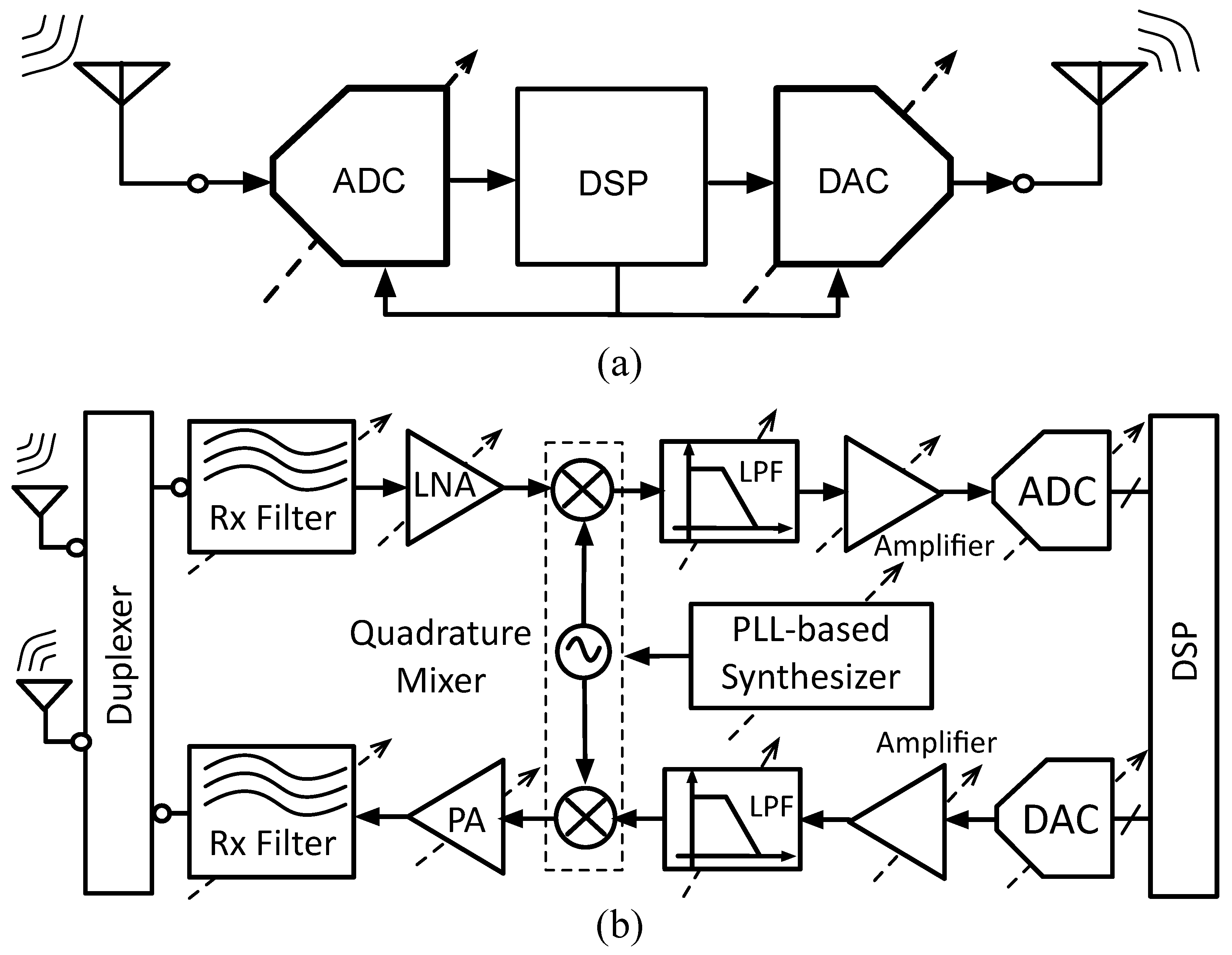

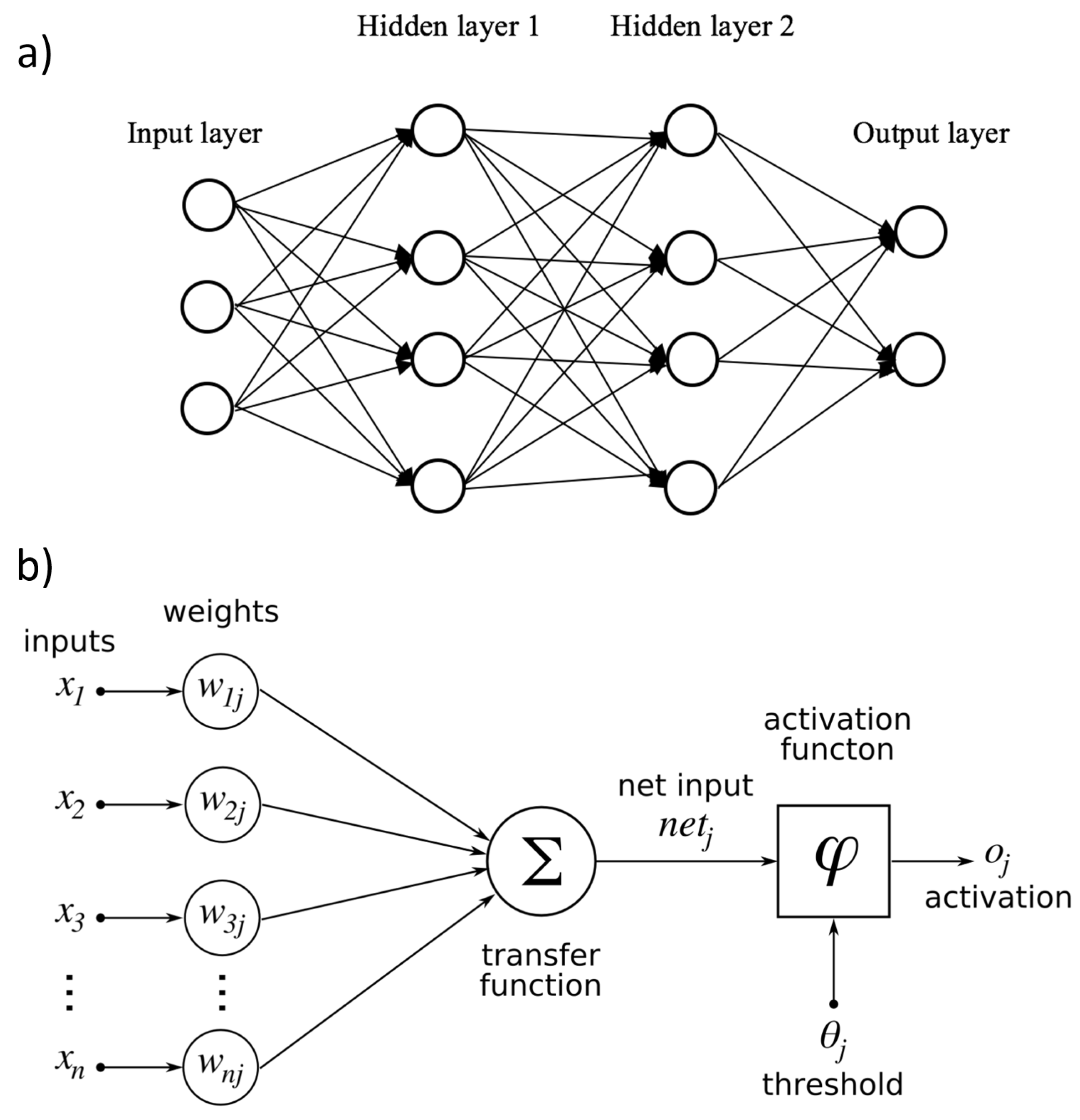
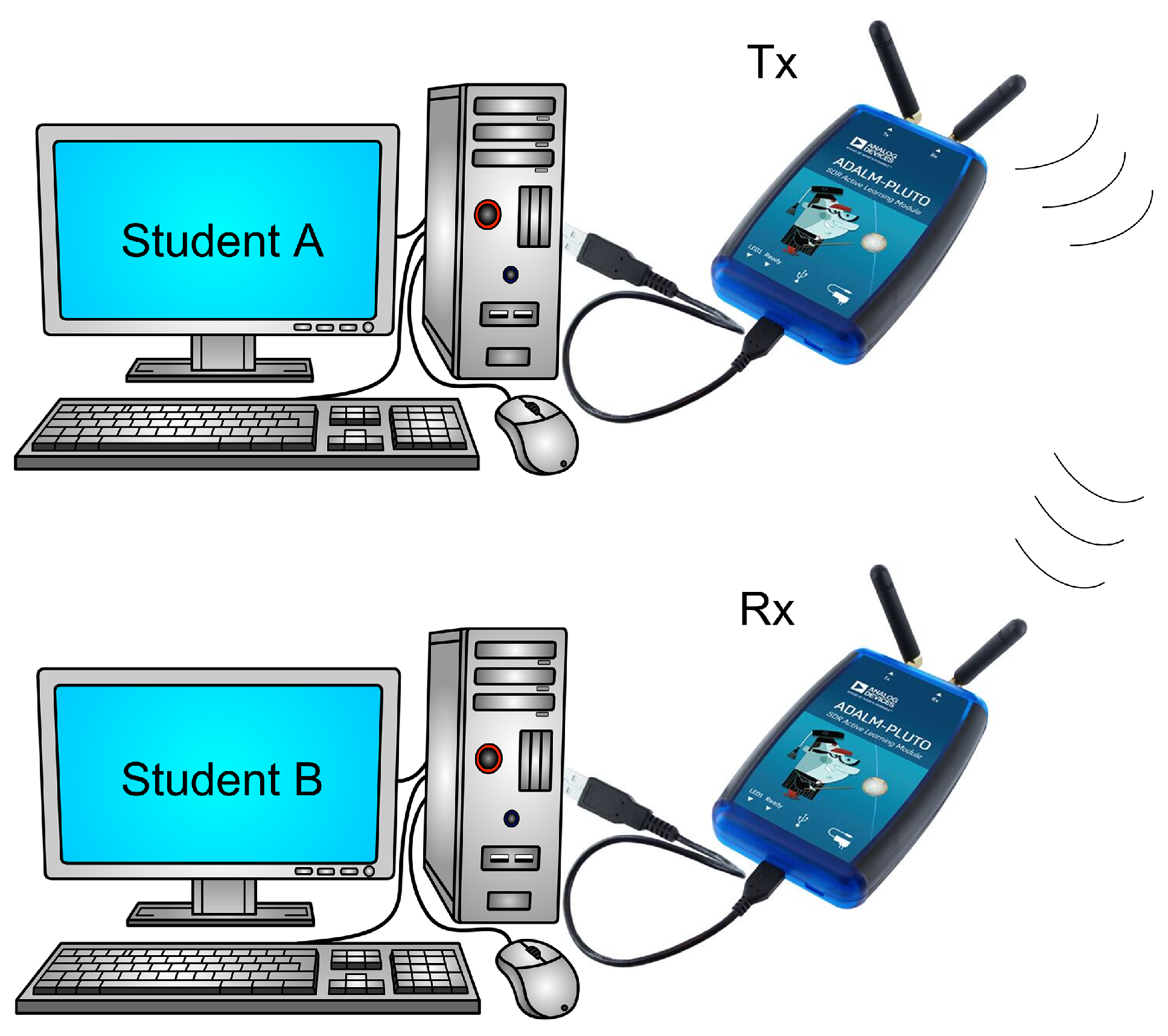
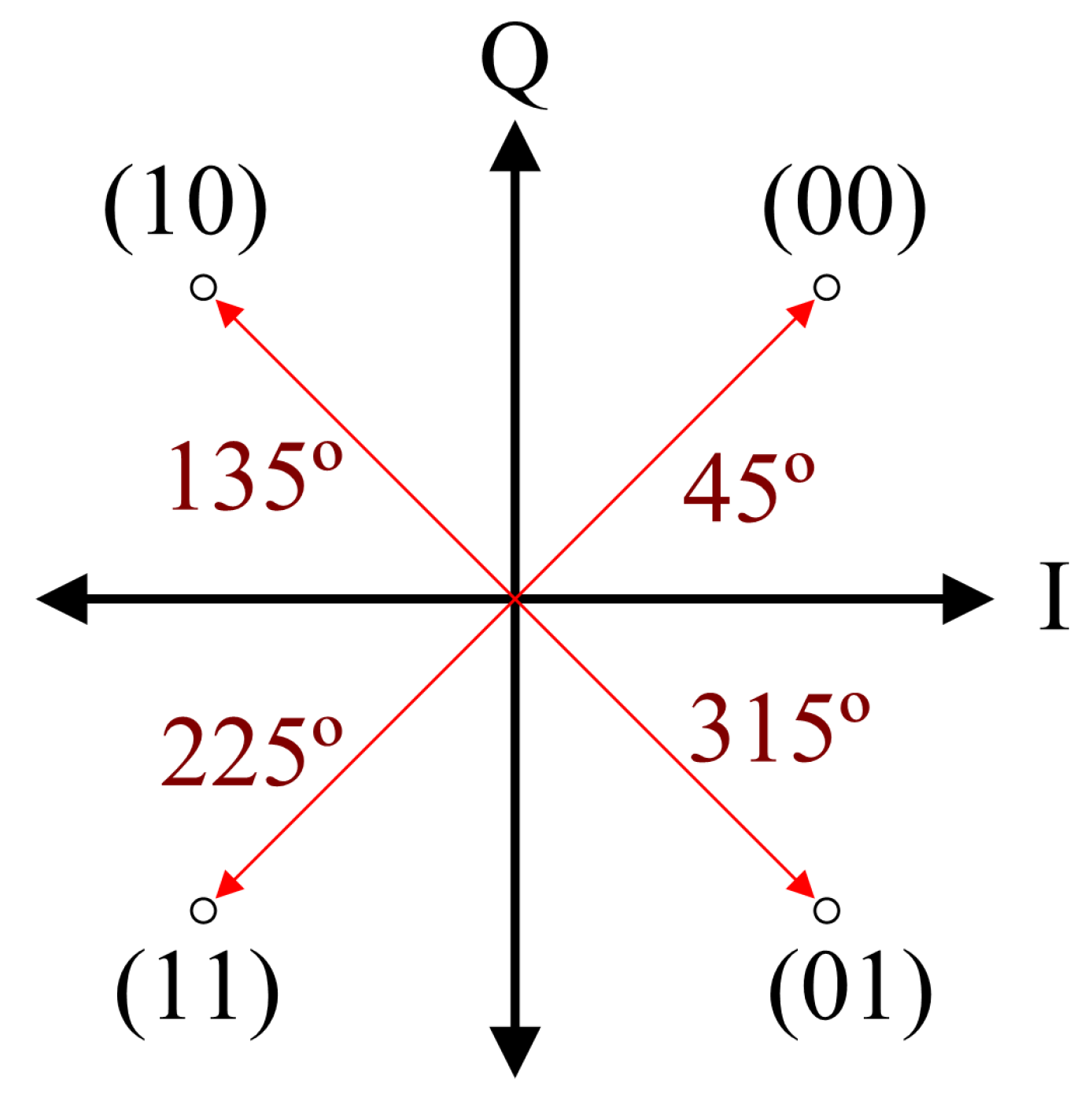
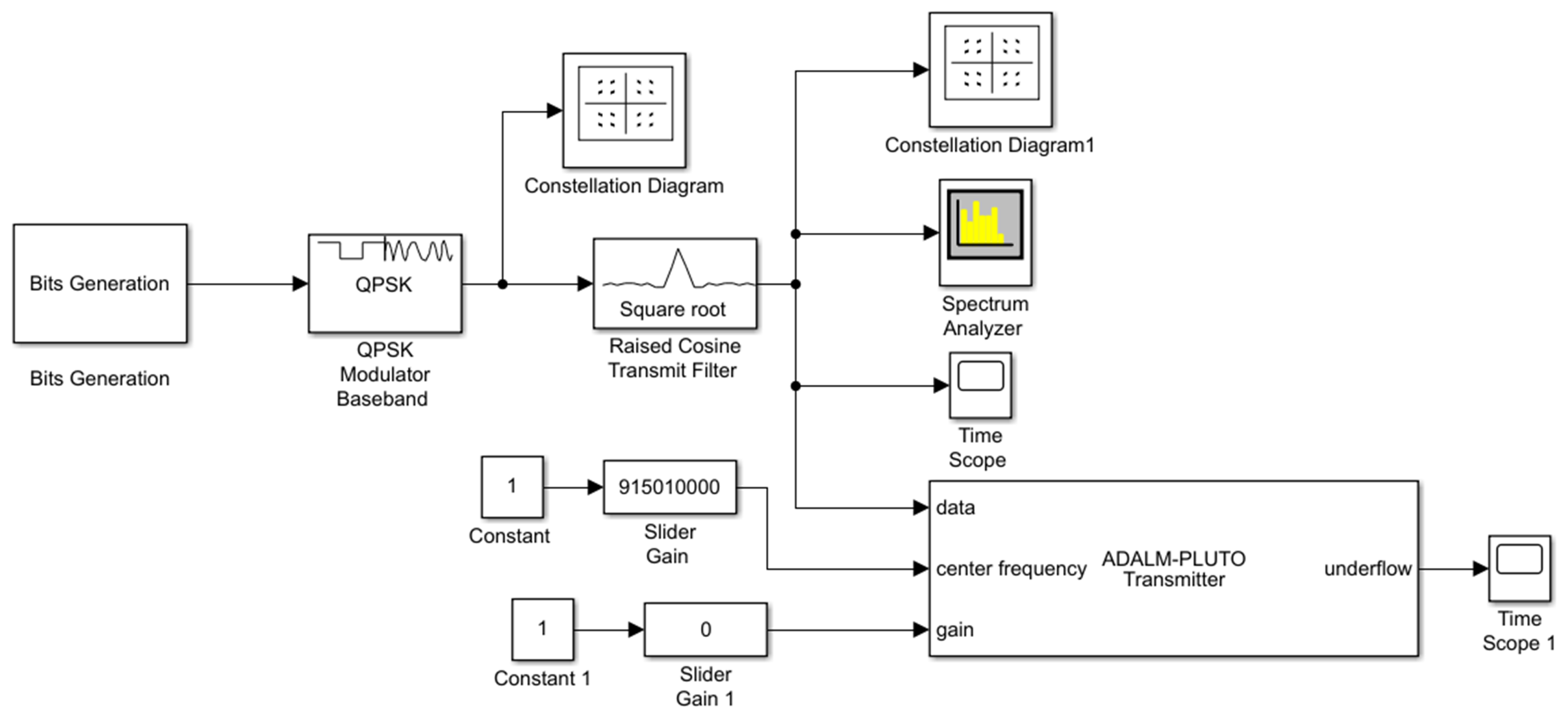
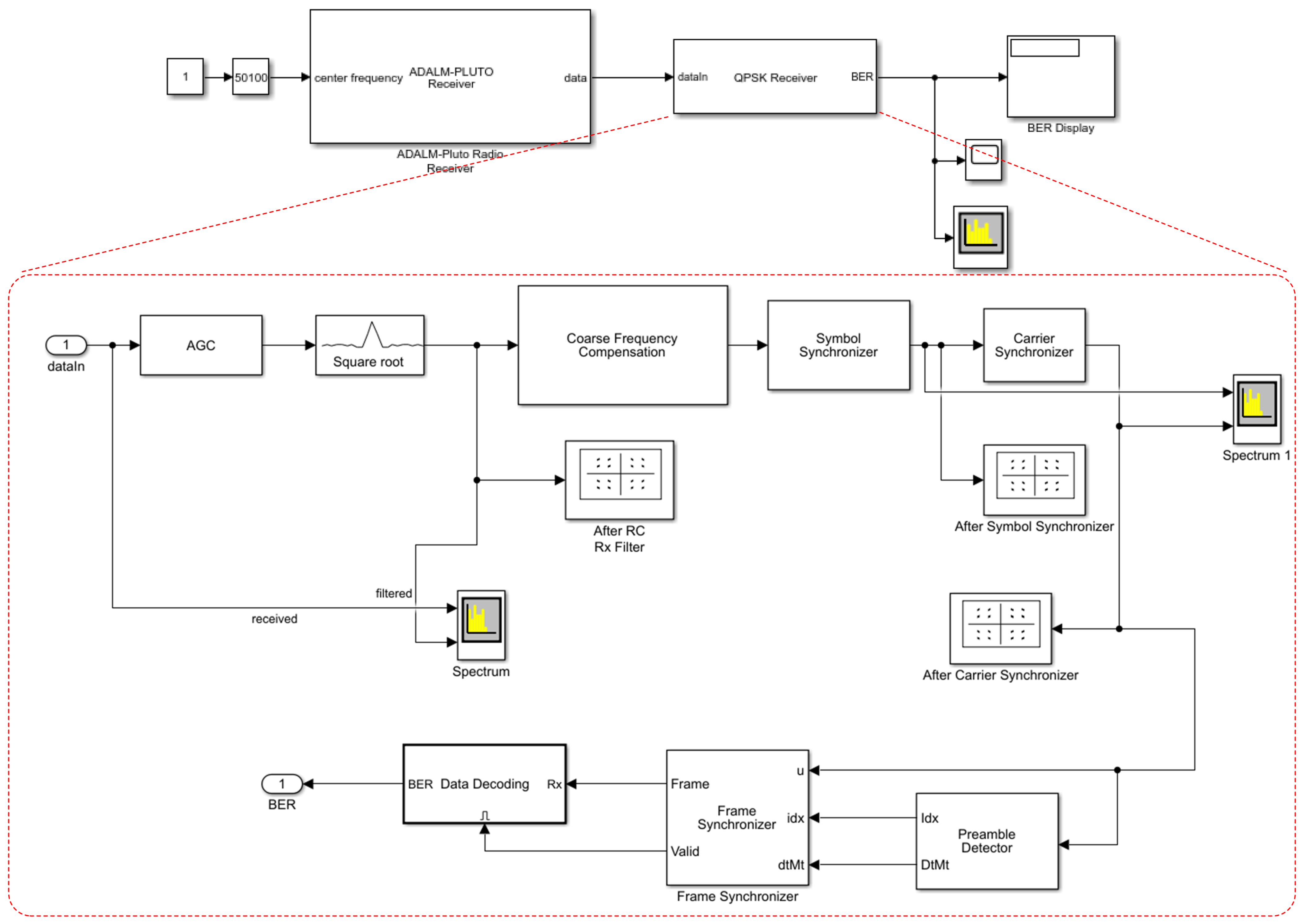

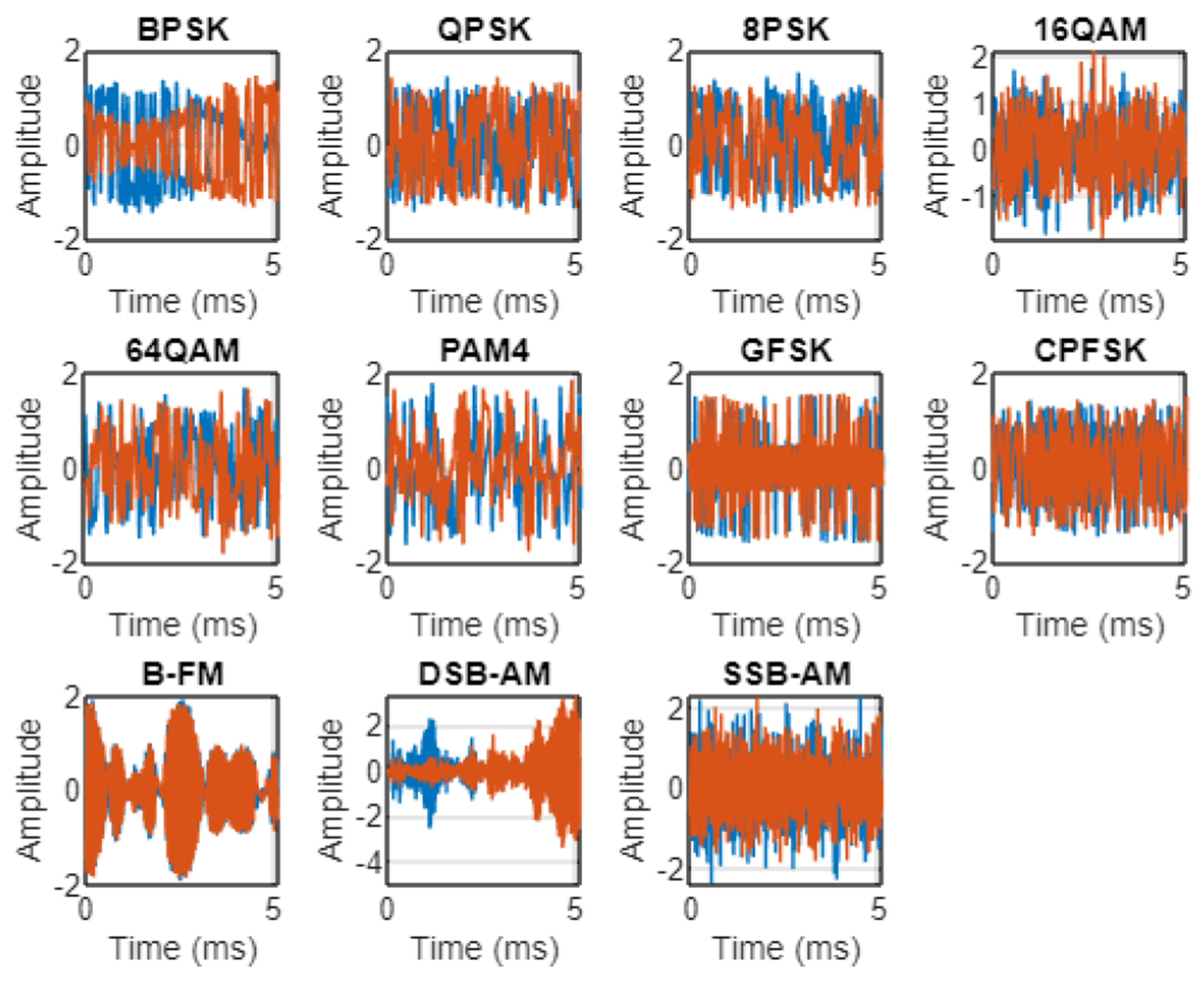
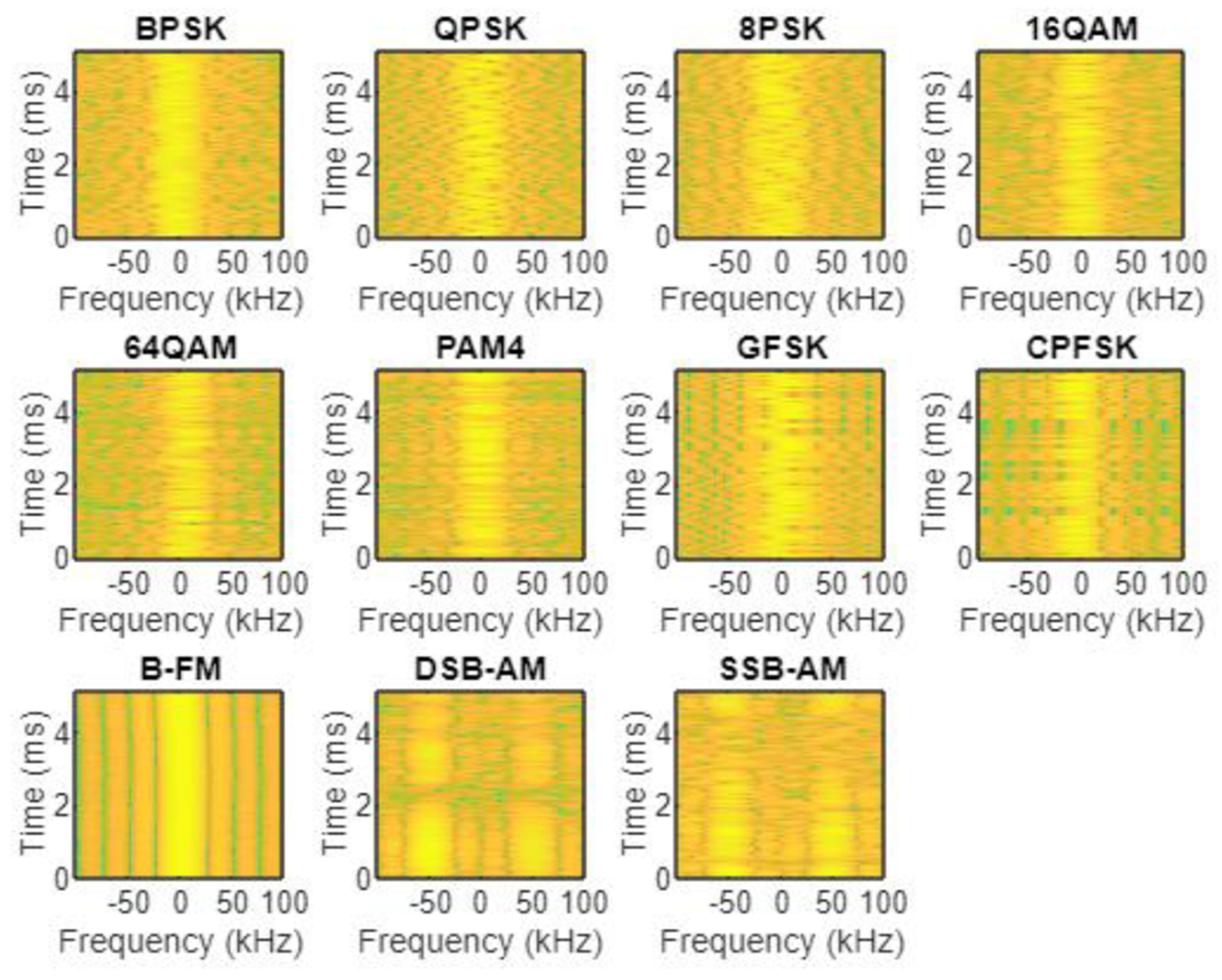
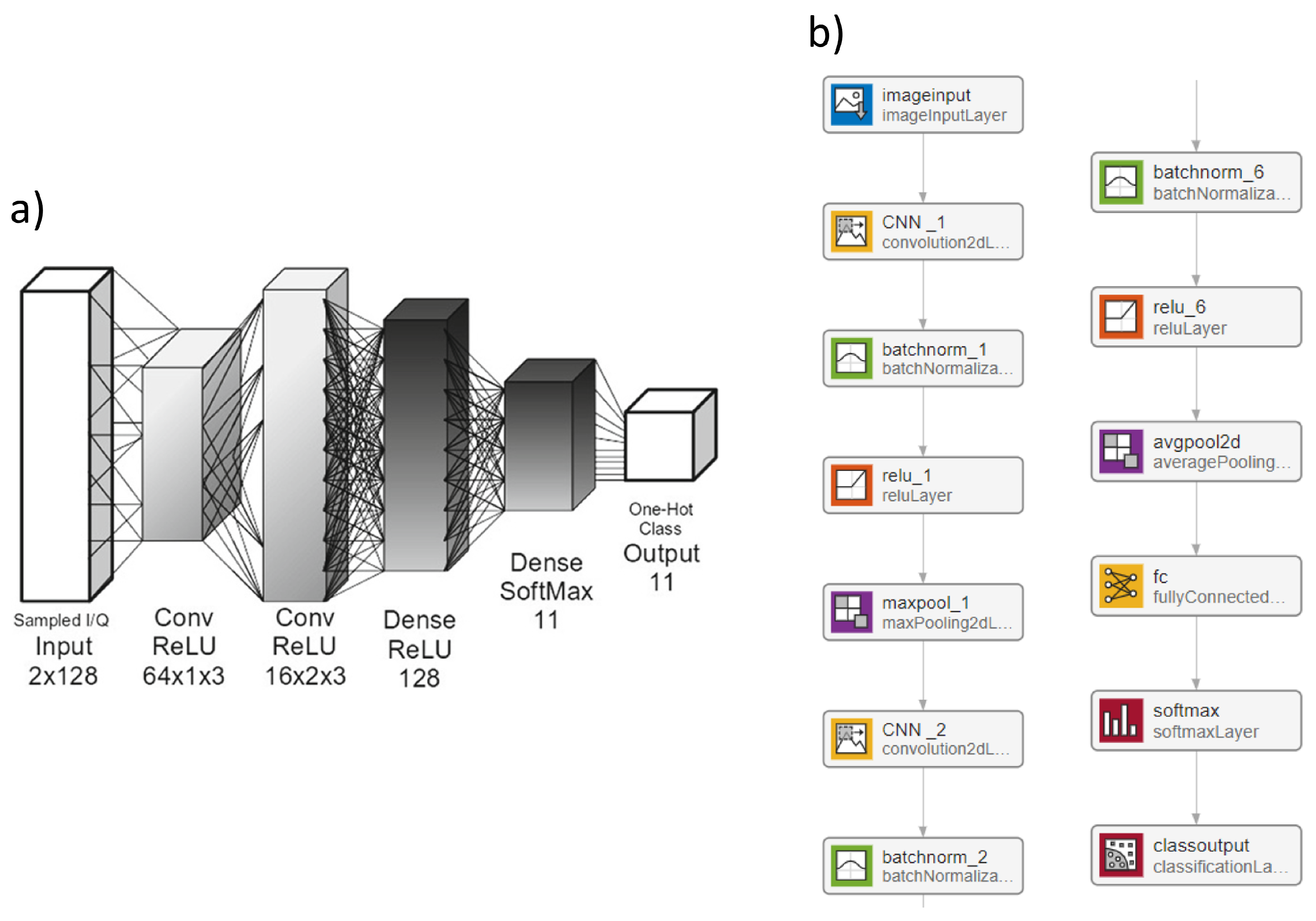

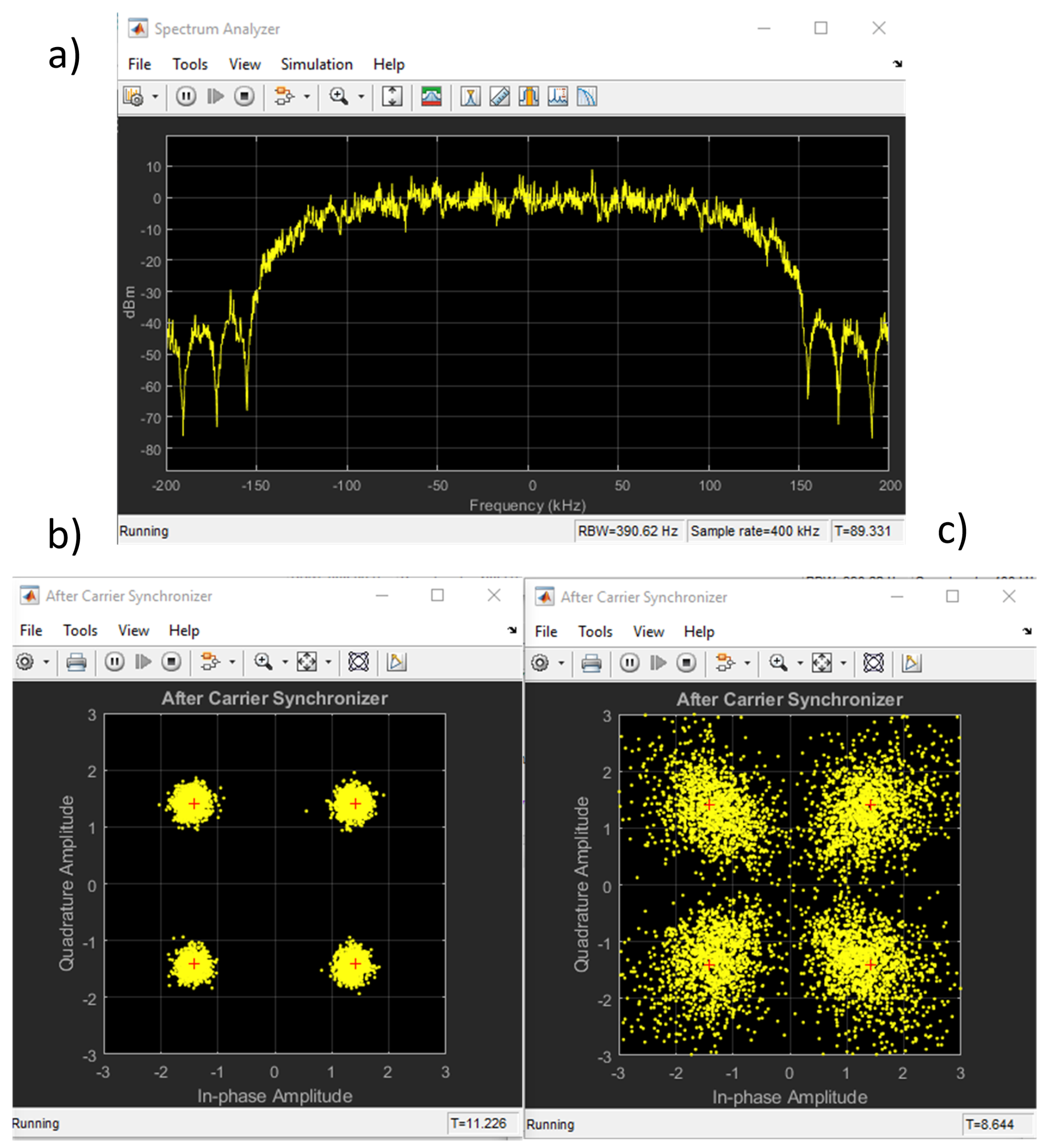
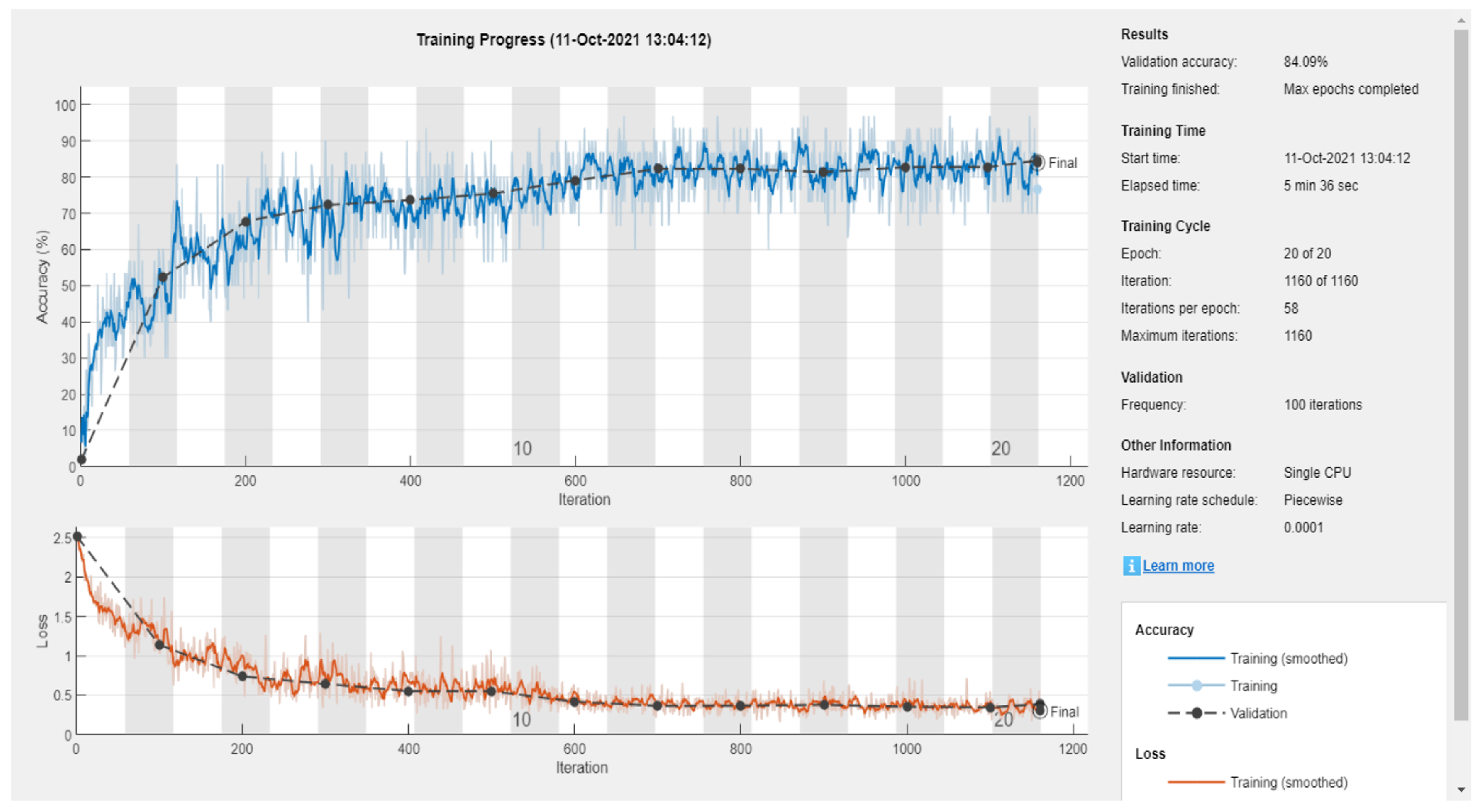


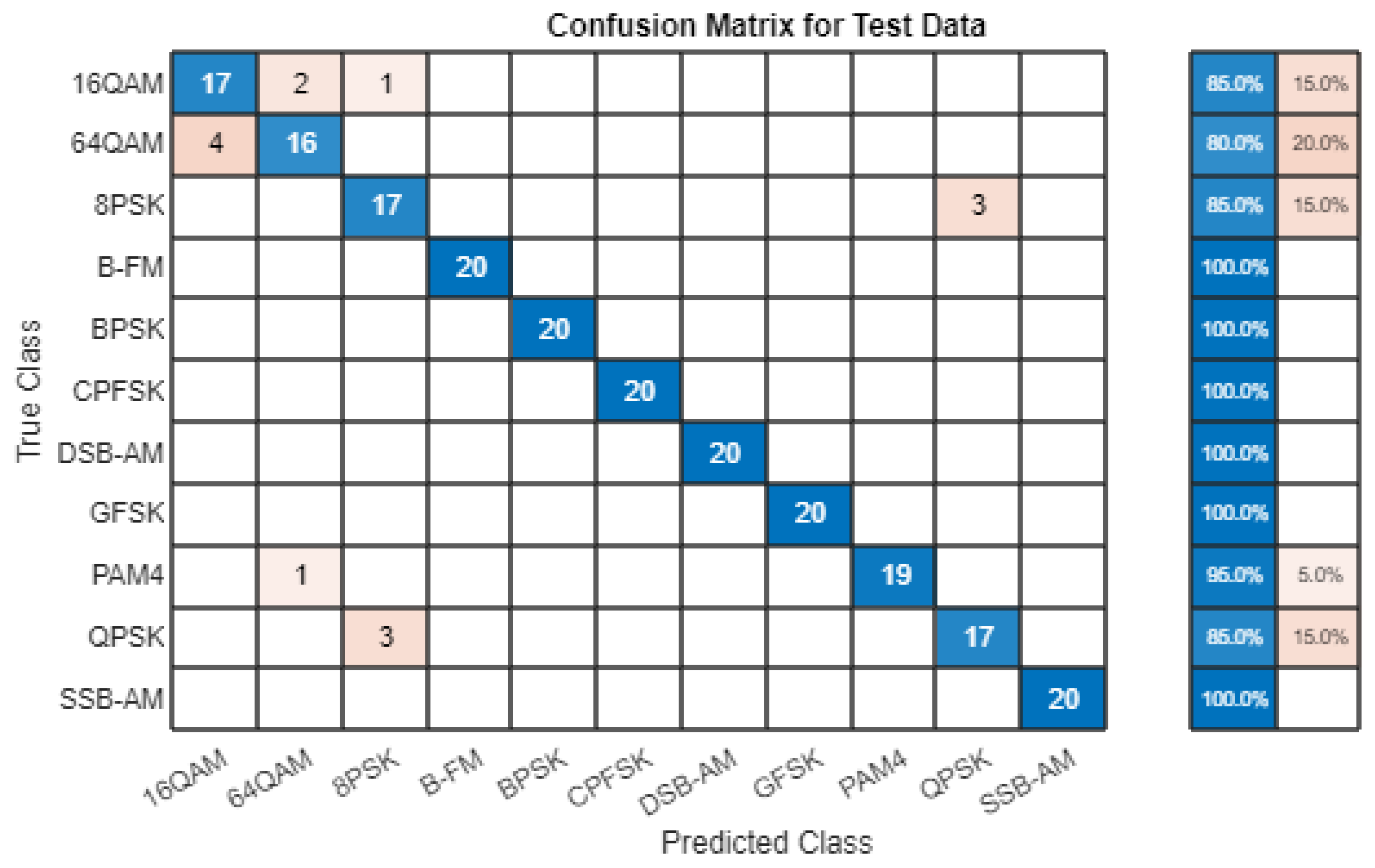
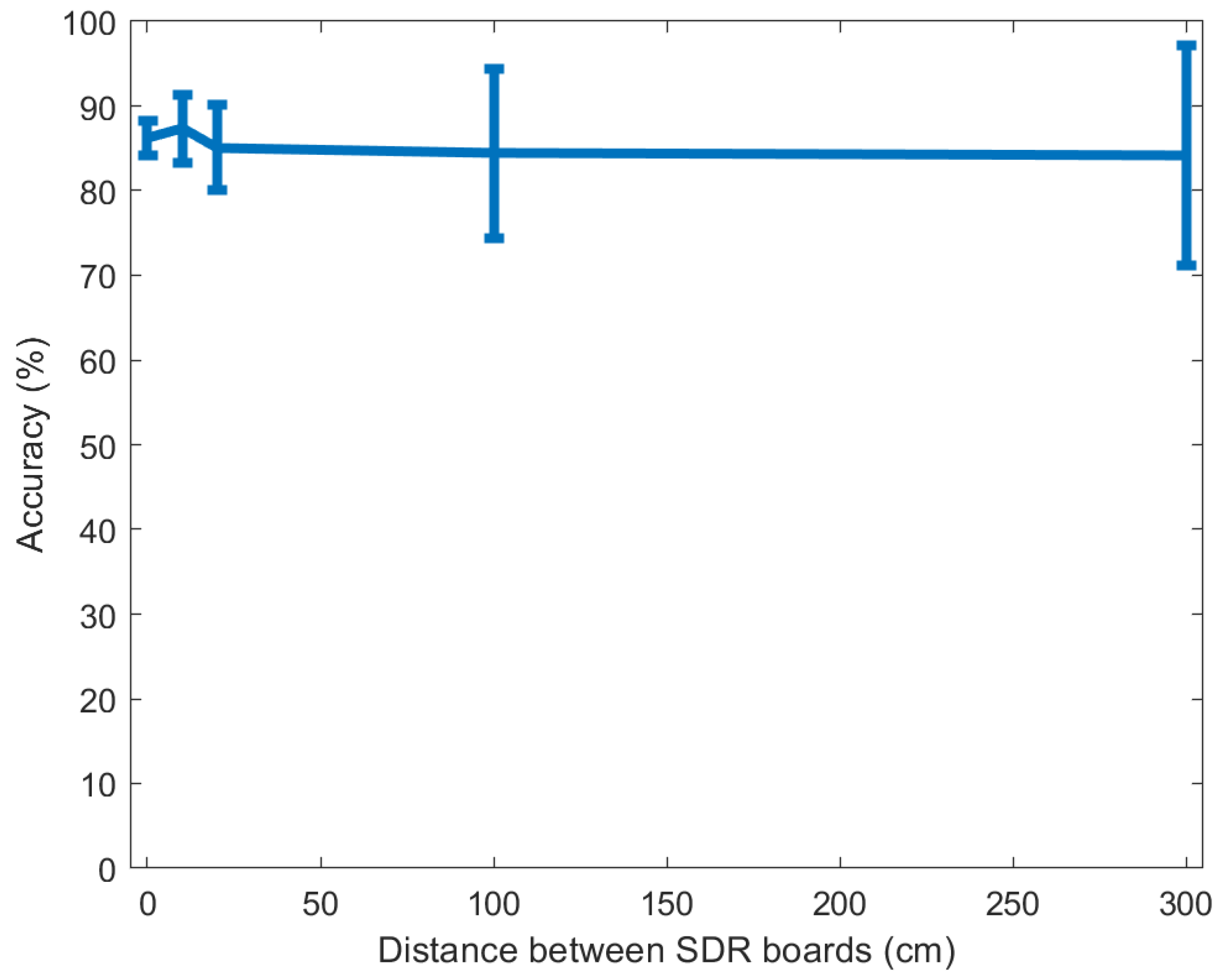
| (kHz) | (%) |
|---|---|
| 0 | 0 |
| 1 | |
| 2 | |
| 3 |
| Learning Rate | Accuracy | Training Time |
|---|---|---|
| 4 min 55 s | ||
| 5 min 36 s | ||
| 5 min 31 s | ||
| 4 min 55 s |
| Number of Layers | Accuracy | Training Time |
|---|---|---|
| 6 | 5 min 36 s | |
| 5 | 10 min 30 s | |
| 4 | 10 min 8 s | |
| 3 | 9 min 54 s |
| Number of Filters | Accuracy | Training Time |
|---|---|---|
| 16 | 10 min 8 s | |
| 32 | 10 min 20 s | |
| 64 | 21 min 11 s |
Disclaimer/Publisher’s Note: The statements, opinions and data contained in all publications are solely those of the individual author(s) and contributor(s) and not of MDPI and/or the editor(s). MDPI and/or the editor(s) disclaim responsibility for any injury to people or property resulting from any ideas, methods, instructions or products referred to in the content. |
© 2023 by the authors. Licensee MDPI, Basel, Switzerland. This article is an open access article distributed under the terms and conditions of the Creative Commons Attribution (CC BY) license (https://creativecommons.org/licenses/by/4.0/).
Share and Cite
Camuñas-Mesa, L.A.; de la Rosa, J.M. Combining Software-Defined Radio Learning Modules and Neural Networks for Teaching Communication Systems Courses. Information 2023, 14, 599. https://doi.org/10.3390/info14110599
Camuñas-Mesa LA, de la Rosa JM. Combining Software-Defined Radio Learning Modules and Neural Networks for Teaching Communication Systems Courses. Information. 2023; 14(11):599. https://doi.org/10.3390/info14110599
Chicago/Turabian StyleCamuñas-Mesa, Luis A., and José M. de la Rosa. 2023. "Combining Software-Defined Radio Learning Modules and Neural Networks for Teaching Communication Systems Courses" Information 14, no. 11: 599. https://doi.org/10.3390/info14110599
APA StyleCamuñas-Mesa, L. A., & de la Rosa, J. M. (2023). Combining Software-Defined Radio Learning Modules and Neural Networks for Teaching Communication Systems Courses. Information, 14(11), 599. https://doi.org/10.3390/info14110599







